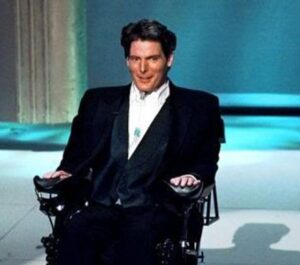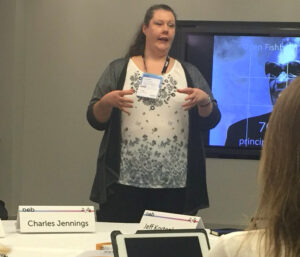There are two main components to think about, “modern learning” and “leader”.
Being a super leader
You could argue there’s a crossover subset here, of “modern leader”, though I think by tackling “modern learning” I hope to cover that.
There’s volumes and volumes written on leadership and what I present here are only my personal thoughts.
There are different aspects of great leadership, depending on the individuals, the context, the organisation, what is trying to be achieved and much more.
One example of a great leader is Christopher Reeve, the actor of Superman The Movie fame. Yes, I’m a huge fan of the Reeve Superman movies. Aside from my childhood love of Superman, part of my admiration is how Reeve behaved and performed after his terrible horse riding accident that left him as a paraplegic in May 1995.

Reeve was put into a situation which most of us can never imagine, how his life changed and was severely physically restricted. However out of that horror came strong leadership on a personal level. Reeve campaigned for rights of the disabled, stem cell research for spinal chord injury victims, became a beacon of hope for the physically challenged and a well known campaigner. He also managed to continue to act and direct films.
To me this is about leadership through adversity. Reeve was highly active in his campaigning, being a visible leader for people to follow. He was also personable and approachable as a normal human being and not a Superman.
You’ll have your own aspects of leadership that you see and admire in many different people and situations you’ve been in. Feel free to share those in the comments below, it would be lovely to read about a leader that is personally relevant to you in some way.
Modern learning includes…
This phrase is one that many of us in learning and development use a lot, though probably isn’t used in businesses and organisations that much. I use it because I want to differentiate myself from the poor ‘chalk and talk’ lecture-style delivery that is more traditional in some areas of training.
“Modern learning” highlights:
- The move away from a lecture style towards inclusive learner-centred facilitation
- Avoiding the methods that don’t have scientific empirical research such as Learning styles – there’s no reason to design your training and delivery to match these. The research doesn’t support it!
- The need to use up to date Instructional Design methods for ahieving the needs of the business and what people actually do at work
- An improved understanding of the brain, how people learn and what we need to do in order to bring that into our design and delivery
- The importance of Performance Support, so it’s not just training that is the answer, but looking at people’s whole workflow and providing eh environment and materials that they need to succeed
- Using data to make business decisions, which includes how to develop people
- How important it is that L&D have business skills, as we are part of the business!
- Use of technology for blending learning experiences that focus on what people do in the workplace
- And, obviously, more!

The world of work has changed and is constantly changing.
What we deliver as part of our role in HR, Organisational Development and L&D needs to keep up and, ideally, be leading the way forward.
We need all the skills mentioned above, and many more, in order to be leading our businesses towards a modern learning and performance culture.
Learning about being a modern learning leader
It’s a question that Sukh Pabial is tackling through a series of webinars, social learning through a Slack channel, and a two day workshop in London. I’m attending these as I want to confirm what I already know and do, share what I’m doing and m approaches to help others, to see what others are doing to update my own methods and learn things I didn’t even know I didn’t know.
Sukh, who is a brilliant and prolific blogger, has a particular post on modern learning and productivity here.


5 Comments
Comments are closed.